Acoustic Emission and Numerical Analysis of Pine Beams Retrofitted with FRP and Poplar Wood
Abstract
:1. Introduction
2. Materials and Methods
2.1. Samples
2.2. Experiment: Four-Points Bending Test Monitored with Acoustic Emission
2.3. FEM Simulations
3. Numerical Simulation Results
4. Experimental Results
5. Acoustic Emission Results
6. Discussion and Conclusions
Author Contributions
Funding
Acknowledgments
Conflicts of Interest
References
- Nowak, T.P.; Jasieńko, J.; Czepiżak, D. Experimental tests and numerical analysis of historic bent timber elements reinforced with cfrp strips. Constr. Build. Mater. 2013, 40, 197–206. [Google Scholar] [CrossRef]
- De la Rosa García, P.; Escamilla, A.C.; García, M.N.G. Bending reinforcement of timber beams with composite carbon fiber and basalt fiber materials. Compos. Part B Eng. 2013, 55, 528–536. [Google Scholar] [CrossRef] [Green Version]
- Neubauerová, P. Timber beams strengthened by carbon–fiber reinforced lamellas. Procedia Eng. 2012, 40, 292–297. [Google Scholar] [CrossRef] [Green Version]
- Kimand, Y.J.; Harries, K.A. Modeling of timber beams strengthened with various CFRP composites. Eng. Struct. 2010, 32, 3225–3234. [Google Scholar]
- Buell, T.W.; Saadatmanesh, H. Strengthening timber bridge beams using carbon fiber. J. Struct. Eng. 2005, 131, 173–187. [Google Scholar] [CrossRef]
- Ajdukiewicz, A.; Brol, J.; Malczyk, A.; Wlaszczuk, M. Rehabilitation of the highest wooden tower in Poland. Struct. Eng. Int. 2000, 10, 161–163. [Google Scholar] [CrossRef]
- Valluzzi, M.R.; Garbin, E.; Modena, C. Flexural strengthening of timber beams by traditional and innovative techniques. J. Build. Apprais. 2007, 3, 125–143. [Google Scholar] [CrossRef]
- De Jesus, A.M.; Pinto, J.M.; Morais, J.J. Analysis of solid wood beams strengthened with CFRP laminates of distinct lengths. Constr. Build. Mater. 2012, 35, 817–828. [Google Scholar] [CrossRef]
- Rescalvo, F.J.; Suarez, E.; Abarkane, C.; Cruz-Valdivieso, A.; Gallego, A. Experimental validation of a CFRP laminated/fabric hybrid layout retrofitting and repairing timber beams. Mech. Adv. Mater. Struc. 2018, 26, 1902–1909. [Google Scholar] [CrossRef]
- Rescalvo, F.J.; Valverde-Palacios, I.; Suarez, E.; Gallego, A. Experimental and analytical analysis for bending load capacity of old timber beams with defects when reinforced with carbon fiber strips. Compos. Struct. 2018, 186, 29–38. [Google Scholar] [CrossRef]
- Rescalvo, F.J.; Valverde-Palacios, I.; Suarez, E.; Gallego, A. Experimental comparison of different carbon fiber composites in reinforcement layouts for wooden beams of historical buildings. Materials 2017, 10, 1113. [Google Scholar] [CrossRef] [PubMed] [Green Version]
- Triantafillou, T.C. Shear reinforcement of wood using FRP materials. J. Mater. Civ. Eng. 1997, 9, 65–69. [Google Scholar] [CrossRef]
- Solarov, R.; Glišić, M. Glulam beams reinforced with FRP strips and their application in architecture. Spatium 2014, 2014, 1–6. [Google Scholar] [CrossRef]
- Ansell, M.P. Hybrid wood composites-integration of wood with other engineering materials. Wood Compos. 2015, 54, 411–426. [Google Scholar]
- Gilfillan, J.; Gilbert, S.; Patrick, G. The use of FRP composites in enhancing the structural behavior of timber beams. J. Reinf. Plast. Compos. 2003, 22, 1373–1388. [Google Scholar] [CrossRef]
- Raftery, G.M.; Harte, A.M. Low-grade glued laminated timber reinforced with FRP plate. Compos. Part B 2011, 42, 724–735. [Google Scholar] [CrossRef]
- Rescalvo, F.J.; Abarkane, C.; Suarez, E.; Valverde-Palacios, I.; Gallego, A. Pine beams retrofitted with FRP and poplar planks: Mechanical behavior. Materials 2019, 12, 3081. [Google Scholar] [CrossRef] [Green Version]
- Rescalvo, F.J.; Valverde-Palacios, I.; Suarez, E.; Roldan, A.; Gallego, A. Monitoring of carbon fiber-reinforced old timber beams via strain and multiresonant acoustic emission sensors. Sensors 2018, 18, 1224. [Google Scholar] [CrossRef] [Green Version]
- Rescalvo, F.J.; Suarez, E.; Valverde-Palacios, I.; Santiago-Zaragoza, J.M.; Gallego, A. Health monitoring of timber beams retrofitted with carbon fiber composites via the acoustic emission technique. Compos. Struct. 2018, 206, 392–402. [Google Scholar] [CrossRef]
- Kowalski, S.J.; Moliński, W.; Musielak, G. The identification of fracture in dried wood based on theoretical modelling and acoustic emission. Wood Sci. Technol. 2004, 38, 35–52. [Google Scholar] [CrossRef]
- Ritschel, F.; Brunner, A.J.; Niemz, P. Nondestructive evaluation of damage accumulation in tensile test specimens made from solid wood and layered wood materials. Compos. Struct. 2013, 95, 44–52. [Google Scholar] [CrossRef]
- Gao, Y.; Wu, Y.; Zhu, X.; Zhu, L.Z.; Wu, Y. Numerical Analysis of the Bending Properties of Cathay Poplar Glulam. Materials 2015, 8, 7059–7073. [Google Scholar] [CrossRef] [PubMed] [Green Version]
- Baño, V.; Arriaga, F.; Guaita, M. Determination of the influence of size and position of knots on load capacity and stress distribution in timber beams of pinus sylvestris using finite element model. Biosyst. Eng. 2013, 114, 214–222. [Google Scholar] [CrossRef]
- AutoCAD®, Autodesk, Inc. USA. Available online: http://autodesk.com/ (accessed on 3 September 2019).
- Code-Aster. Available online: http://www.code-aster.org (accessed on 3 September 2019).
- MATLAB®, MathWorks, Inc. USA. Available online: http://www.mathworks.com/ (accessed on 3 September 2019).
- Crisfield, M.A. Non-linear Finite Element Analysis of Solids and Structures; Wiley: Chichester, UK, 1997; Volumes 1–2. [Google Scholar]
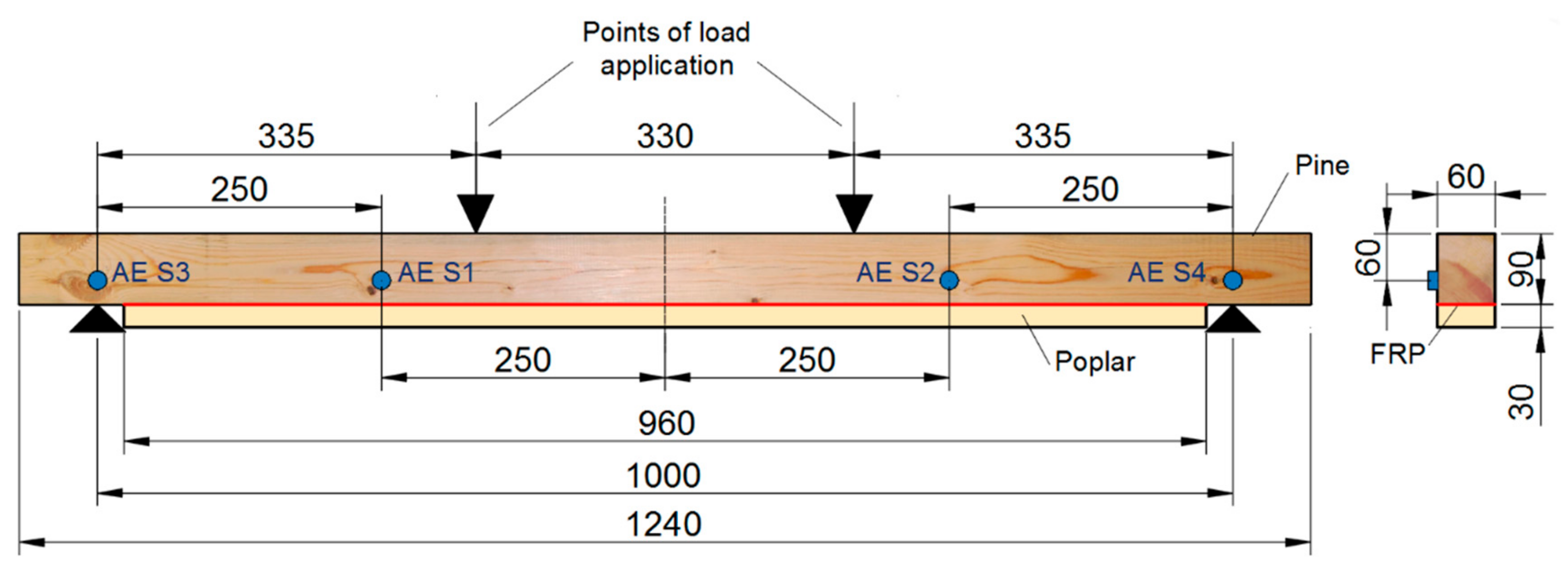
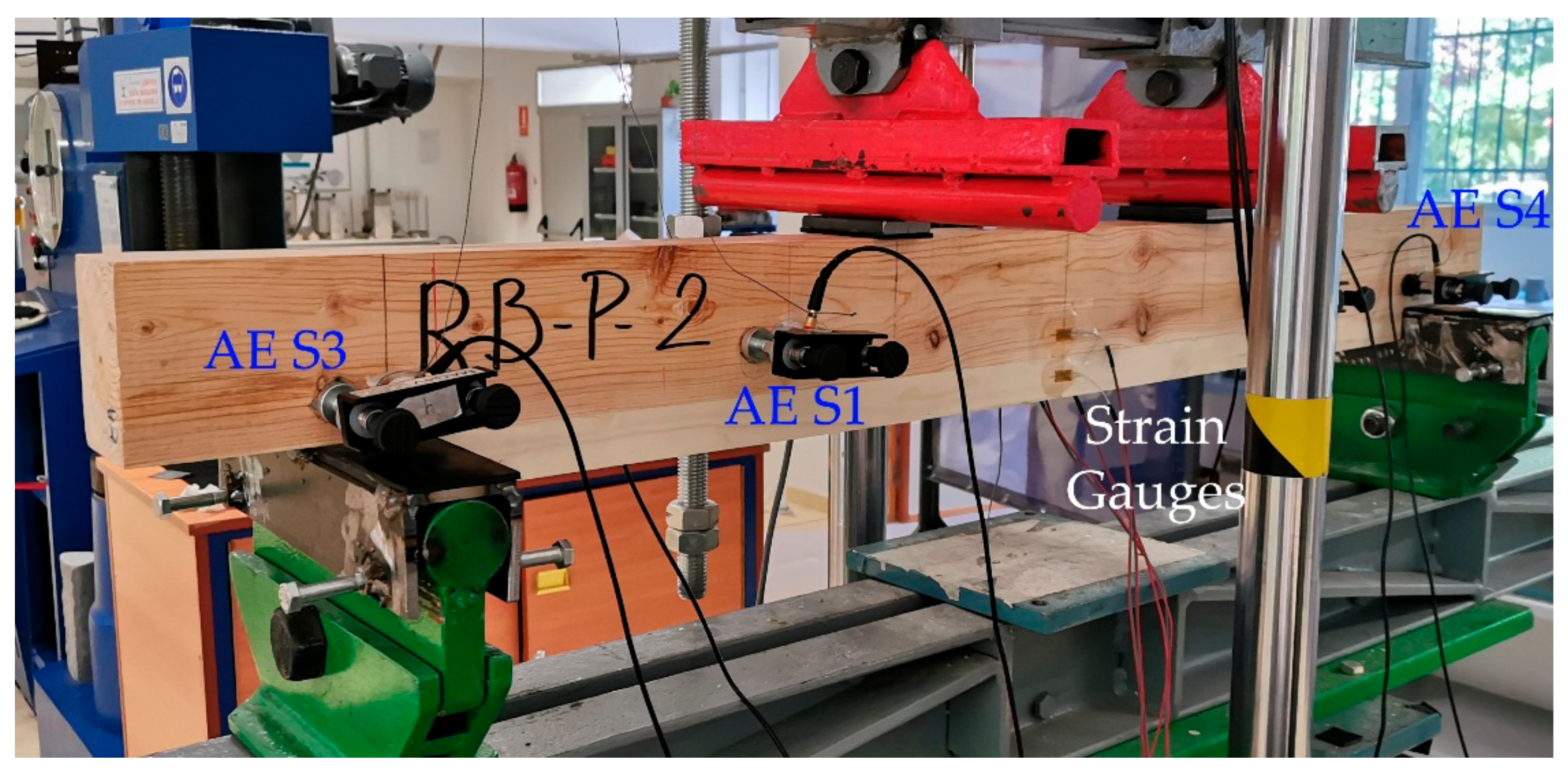

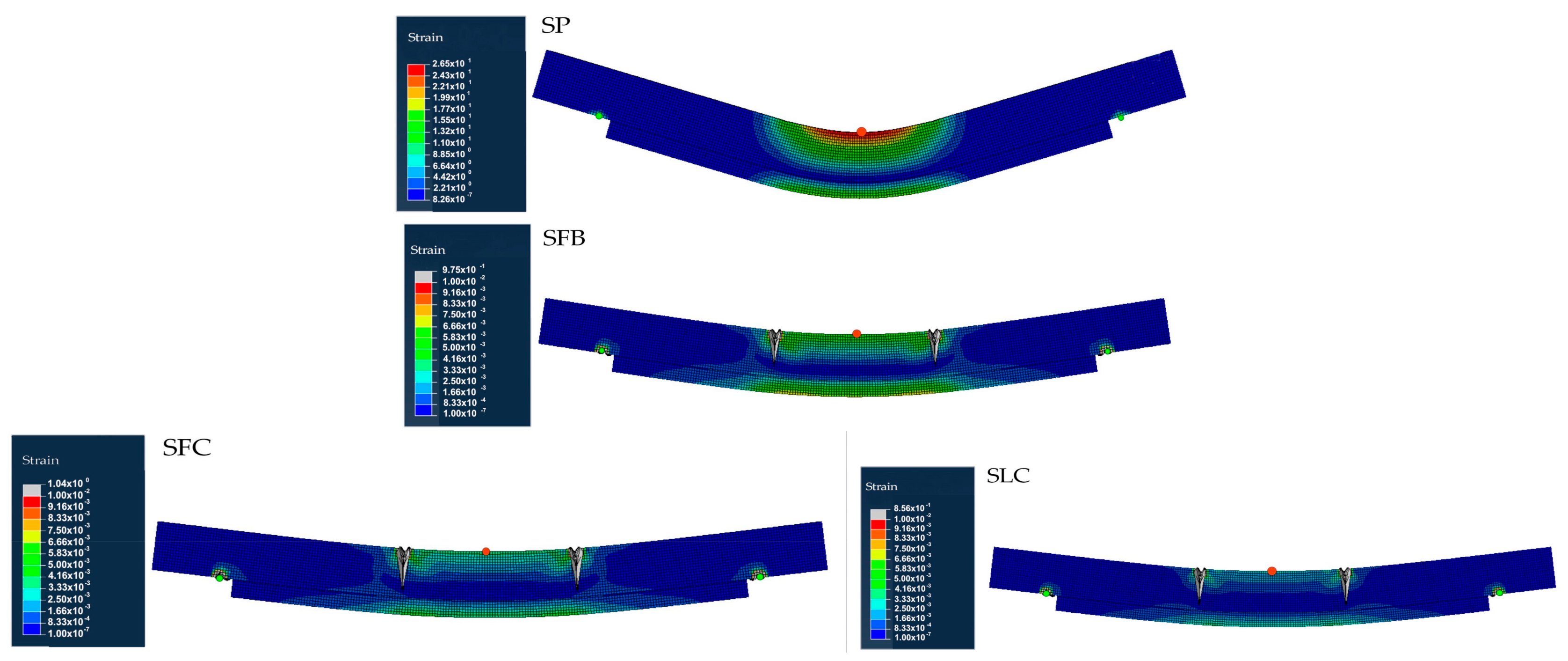
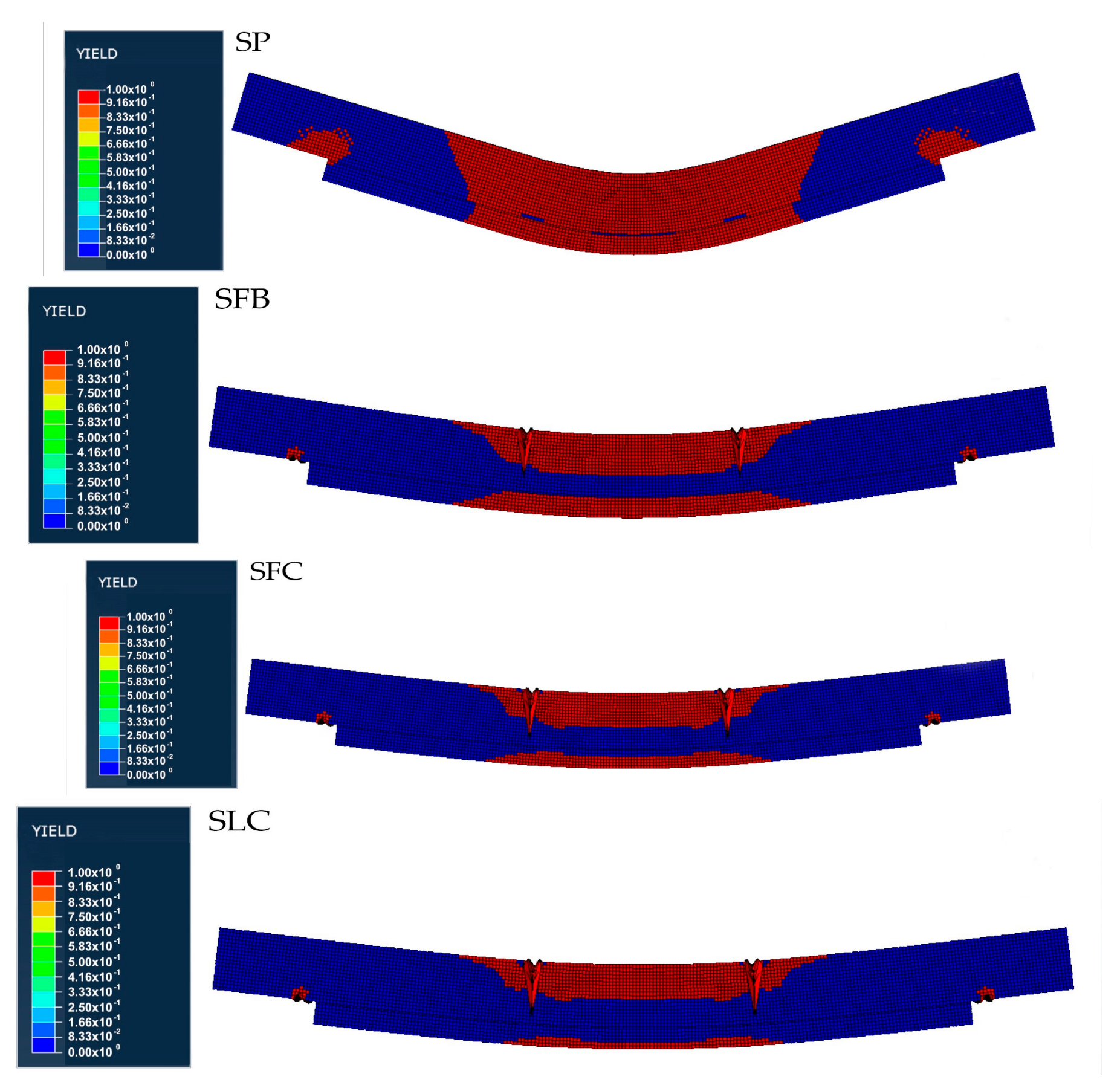
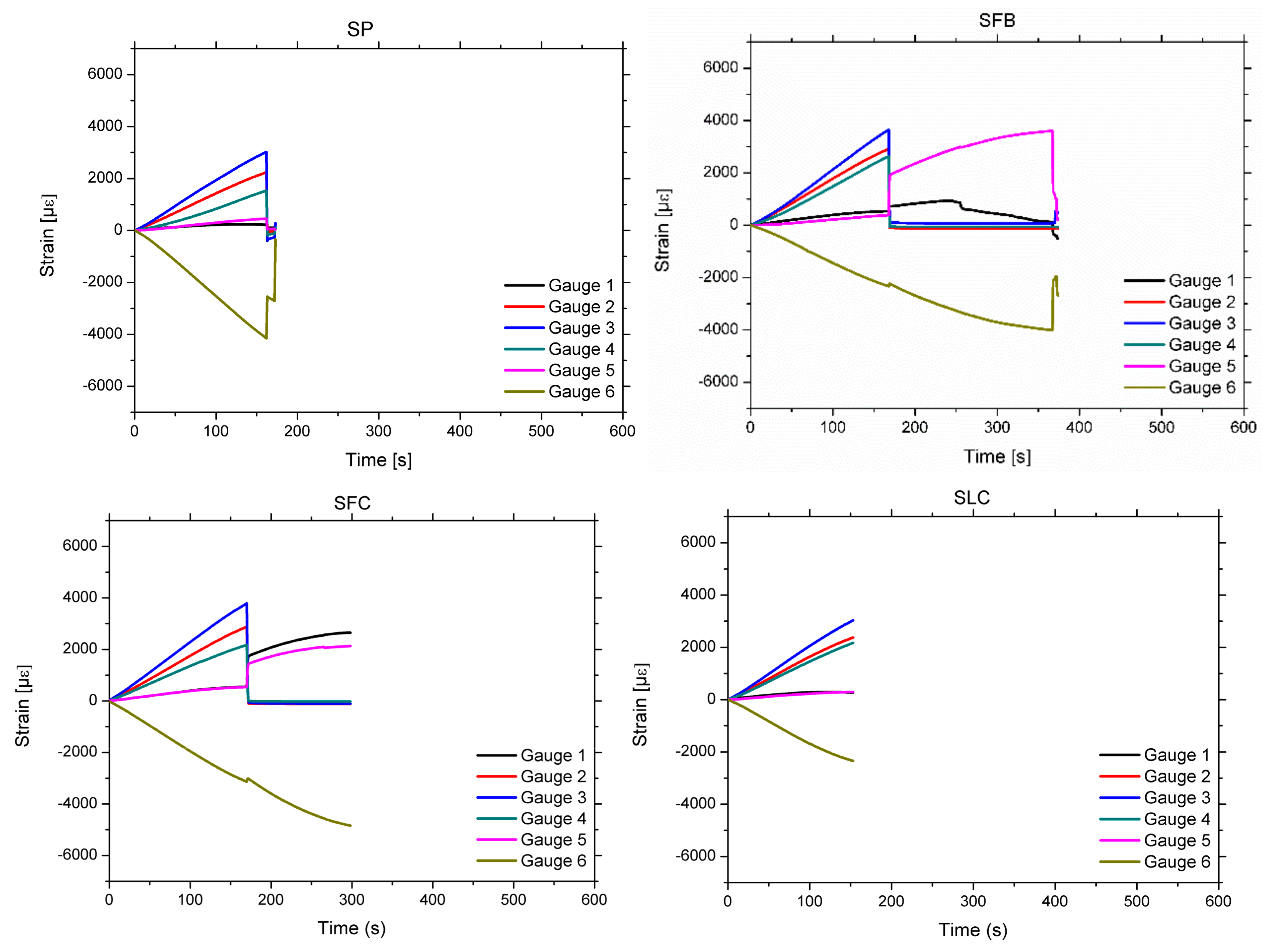
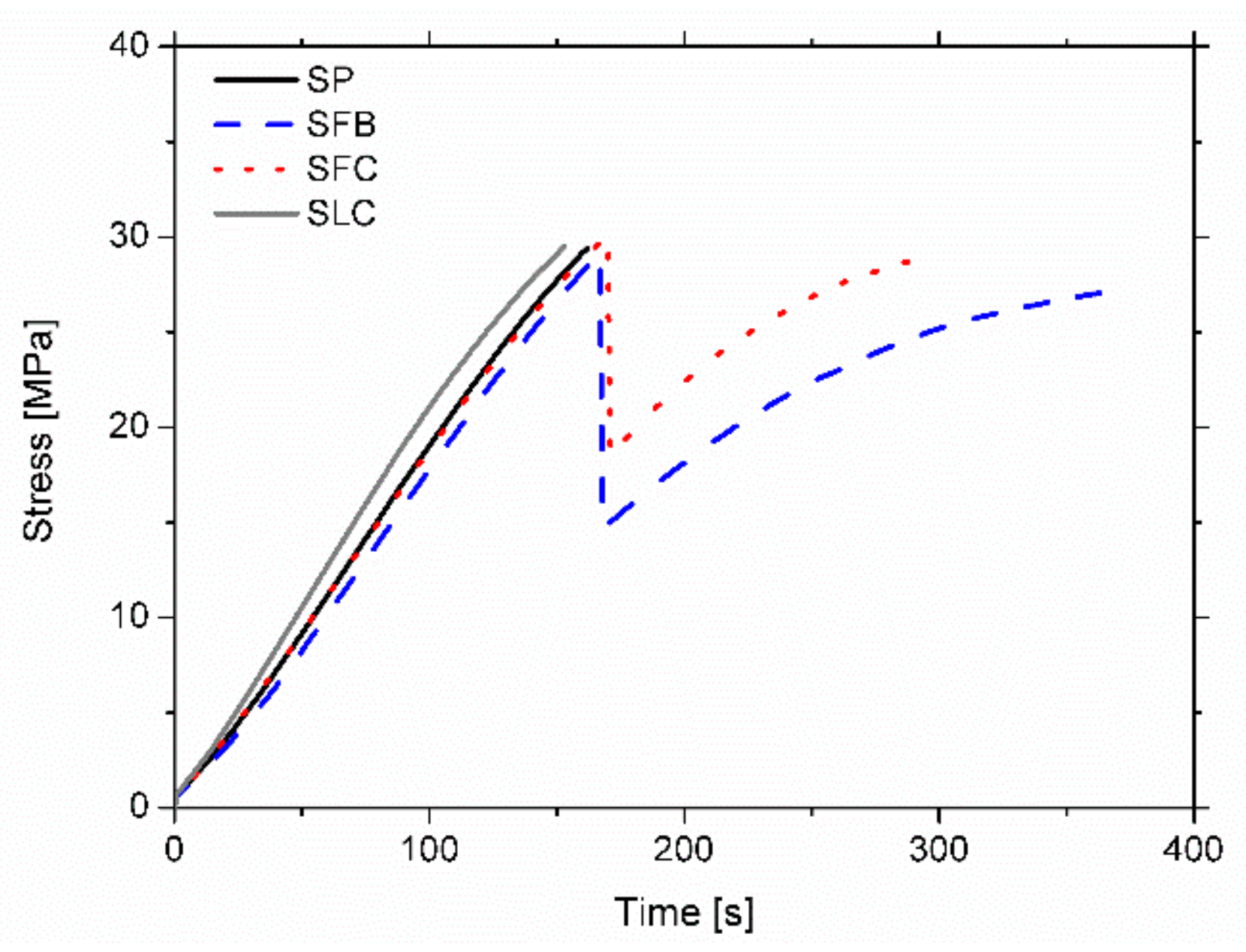

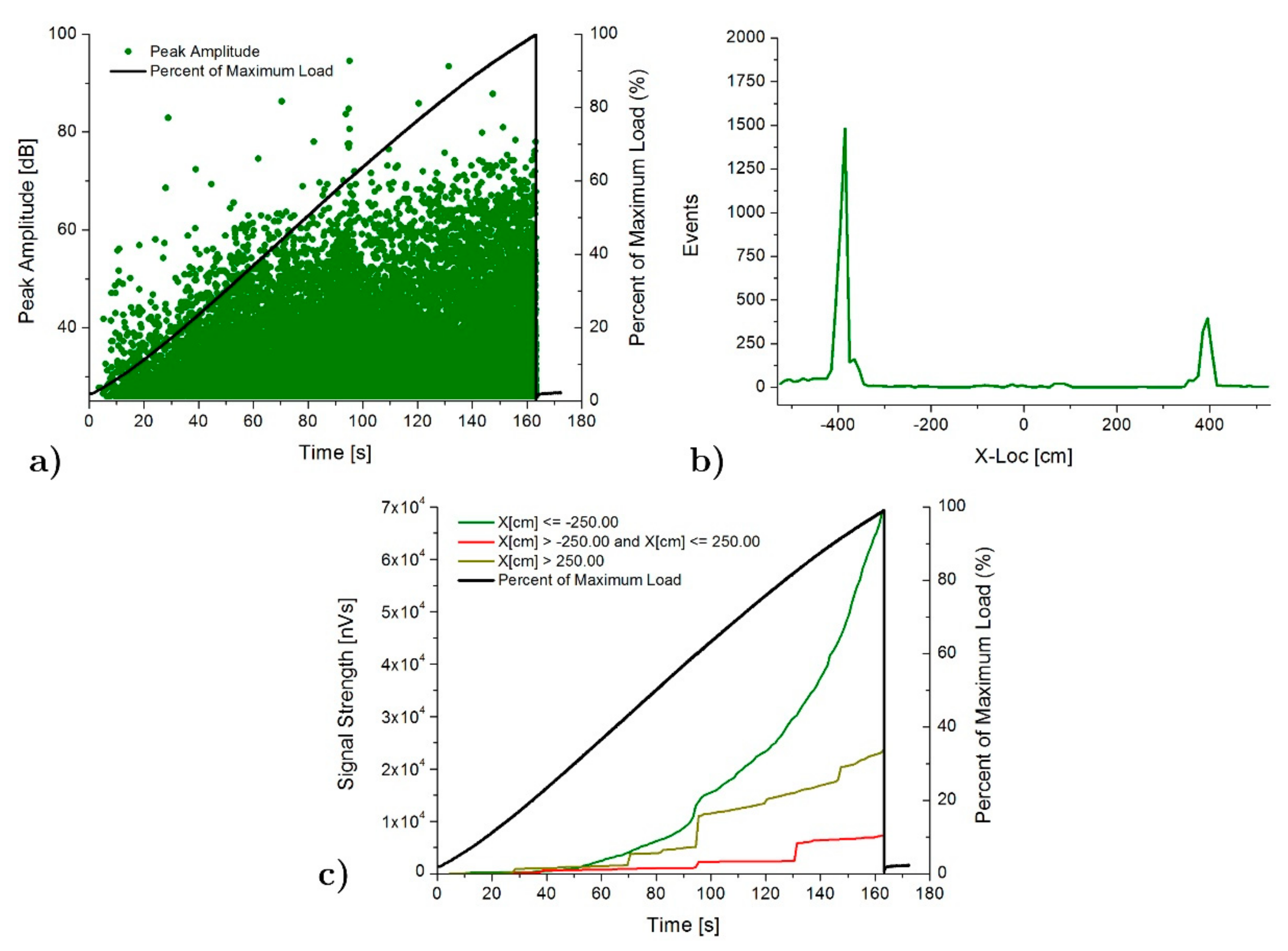
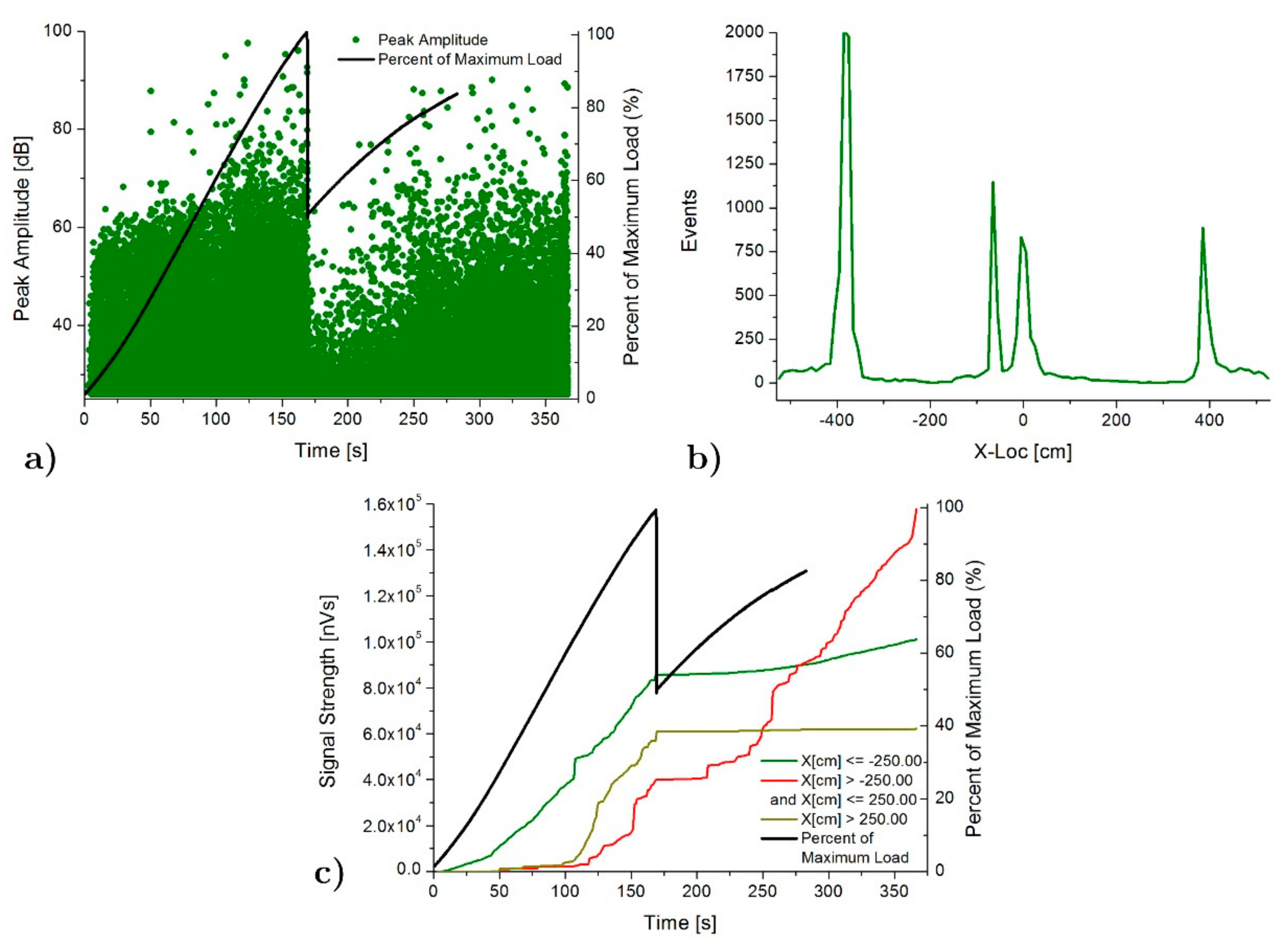
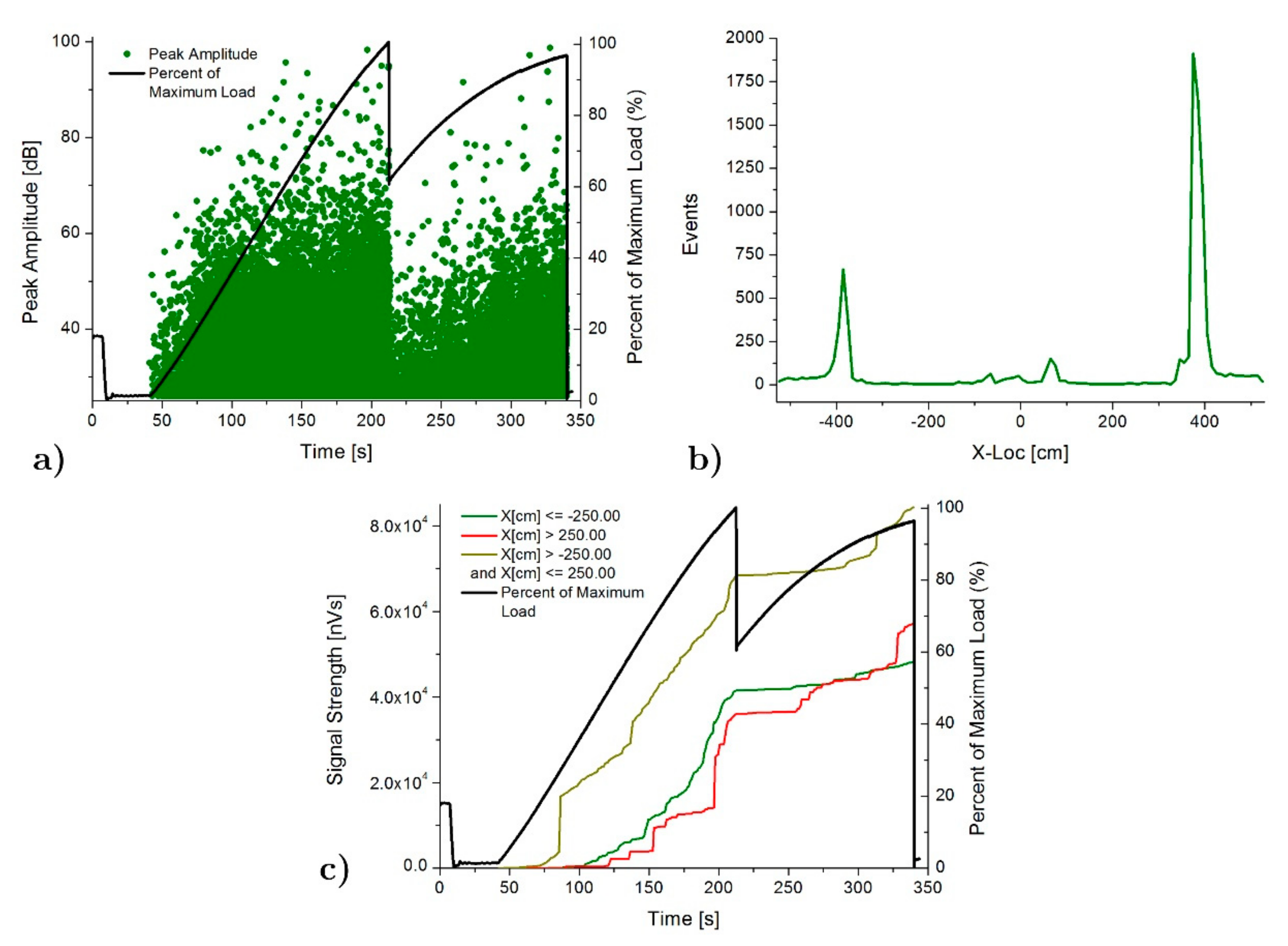
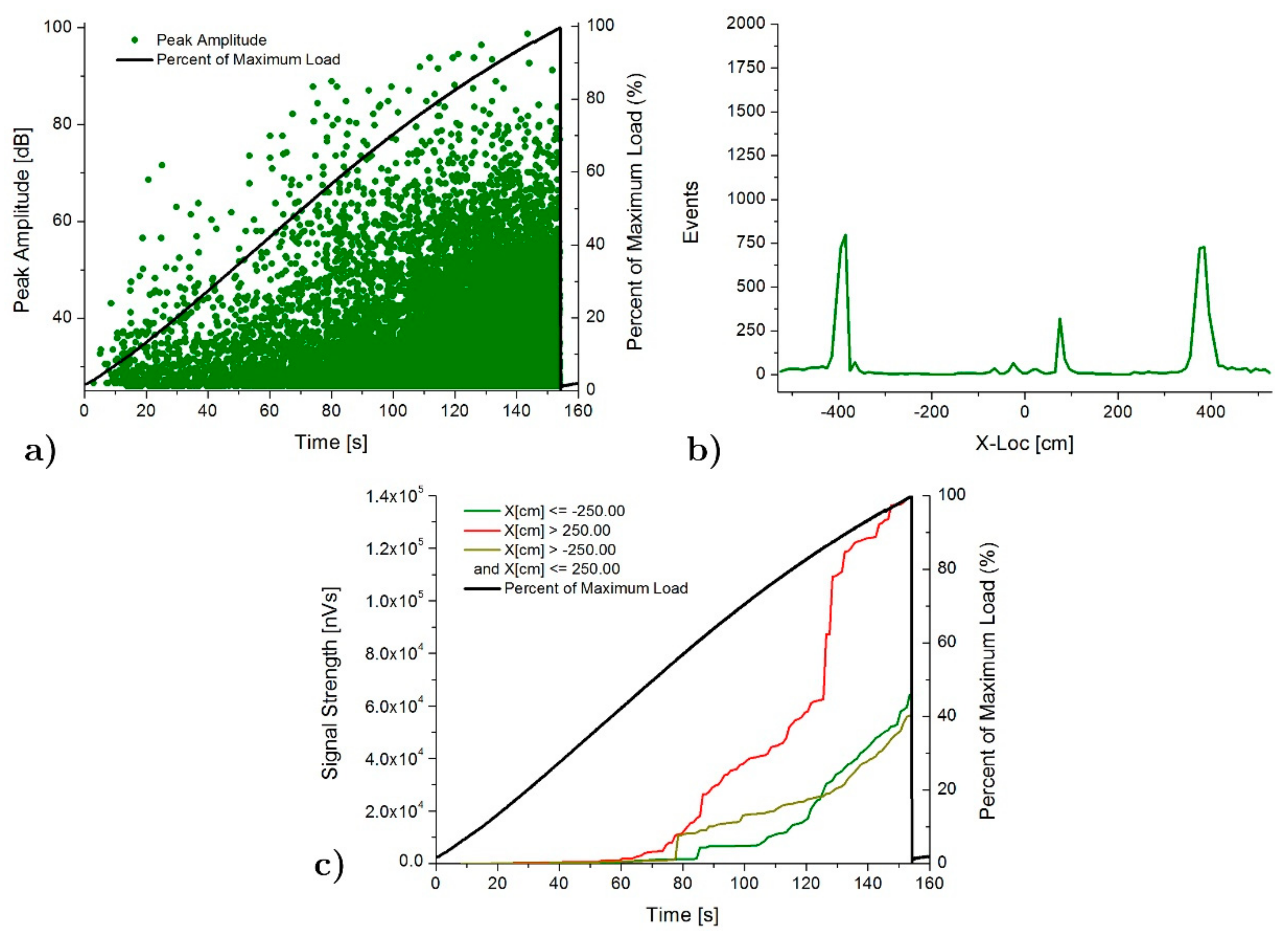
| Specimen | MOEdin, p | MOEst, po |
|---|---|---|
| SP | 6465 | 10,261 |
| SFB | 7709 | 9441 |
| SFC | 7186 | 9441 |
| SLC | 8775 | 10,142 |
| Configuration | Reinforcement Type | FRP Thickness (mm) | Resistant Area per Unit Width (mm2/m) | FRP Elastic Modulus (GPa) |
|---|---|---|---|---|
| SP | Poplar | − | − | − |
| SFB | FB/Poplar | 0.14 | 142.5 | 890 |
| SFC | FC/Poplar | 0.17 | 166.6 | 2300 |
| SLC | LC/Poplar | 1.4 | − | 1650 |
| Reinforcements | Elastic Modulus (MOE) kN/m2 | Poisson’s Ratio | Yield Stress kN/m2 | (MOR) kN/m2 |
|---|---|---|---|---|
| Poplar | 8.8 × 106 | 0.37 | 2 × 104 | 3.8 × 104 |
| Carbon fabric (FC) | 2.3 × 108 | 0.30 | 3 × 106 | 4.83 × 107 |
| Basalt fabric (FB) | 8.9 × 107 | 0.30 | 2 × 106 | 4.84 × 107 |
| Carbon pultruded laminate (LC) | 1.65 × 108 | 0.30 | 2.5 × 106 | 2.6 × 107 |
| Specimen | MOEnum (MPa) | Maximum Strain Upper Face (pine) (%) | Maximum Strain Bottom Face (poplar) (%) |
|---|---|---|---|
| SP | 8455 | 0.124 | 0.255 |
| SFB | 9901 | 0.078 | 0.189 |
| SFC | 9807 | 0.081 | 0.159 |
| SLC | 11309 | 0.070 | 0.159 |
| Specimen | MOEst,exp | MOR | Failure Pattern |
|---|---|---|---|
| SP | 9590 | 29.4 | Strong pine-poplar delamination and a mixed brittle tensile/shear fracture of the pine at the end of the test |
| SFB | 8160 | 29.1 | Complete FRP-poplar delamination at 46% and a brittle tensile fracture of the pine at the end of the test |
| SFC | 8180 | 30.1 | Complete FRP-poplar delamination at 58% and a mixed brittle tensile/shear fracture of the pine at the end of the test |
| SLC | 9760 | 29.5 | Very slight poplar-FRP delamination and a brittle shear fracture of the pine at the end of the test |
| Specimen | Left Side | Right Side | Delamination Percentage | ||
|---|---|---|---|---|---|
| SS (104 ue) | Events Rate (events/dm) | SS (104 ue) | Events Rate (events/dm) | ||
| SP | 7 | 1500 | 2.3 | 400 | 100% |
| SFB | 10 | 2000 | 6 | 900 | 100% |
| SFC | 5 | 680 | 8.5 | 1900 | 100% |
| SLC | 6.2 | 800 | 5.8 | 720 | 10% |
© 2020 by the authors. Licensee MDPI, Basel, Switzerland. This article is an open access article distributed under the terms and conditions of the Creative Commons Attribution (CC BY) license (http://creativecommons.org/licenses/by/4.0/).
Share and Cite
Rescalvo, F.J.; Rodríguez, M.; Bravo, R.; Abarkane, C.; Gallego, A. Acoustic Emission and Numerical Analysis of Pine Beams Retrofitted with FRP and Poplar Wood. Materials 2020, 13, 435. https://doi.org/10.3390/ma13020435
Rescalvo FJ, Rodríguez M, Bravo R, Abarkane C, Gallego A. Acoustic Emission and Numerical Analysis of Pine Beams Retrofitted with FRP and Poplar Wood. Materials. 2020; 13(2):435. https://doi.org/10.3390/ma13020435
Chicago/Turabian StyleRescalvo, Francisco J., María Rodríguez, Rafael Bravo, Chihab Abarkane, and Antolino Gallego. 2020. "Acoustic Emission and Numerical Analysis of Pine Beams Retrofitted with FRP and Poplar Wood" Materials 13, no. 2: 435. https://doi.org/10.3390/ma13020435
APA StyleRescalvo, F. J., Rodríguez, M., Bravo, R., Abarkane, C., & Gallego, A. (2020). Acoustic Emission and Numerical Analysis of Pine Beams Retrofitted with FRP and Poplar Wood. Materials, 13(2), 435. https://doi.org/10.3390/ma13020435







